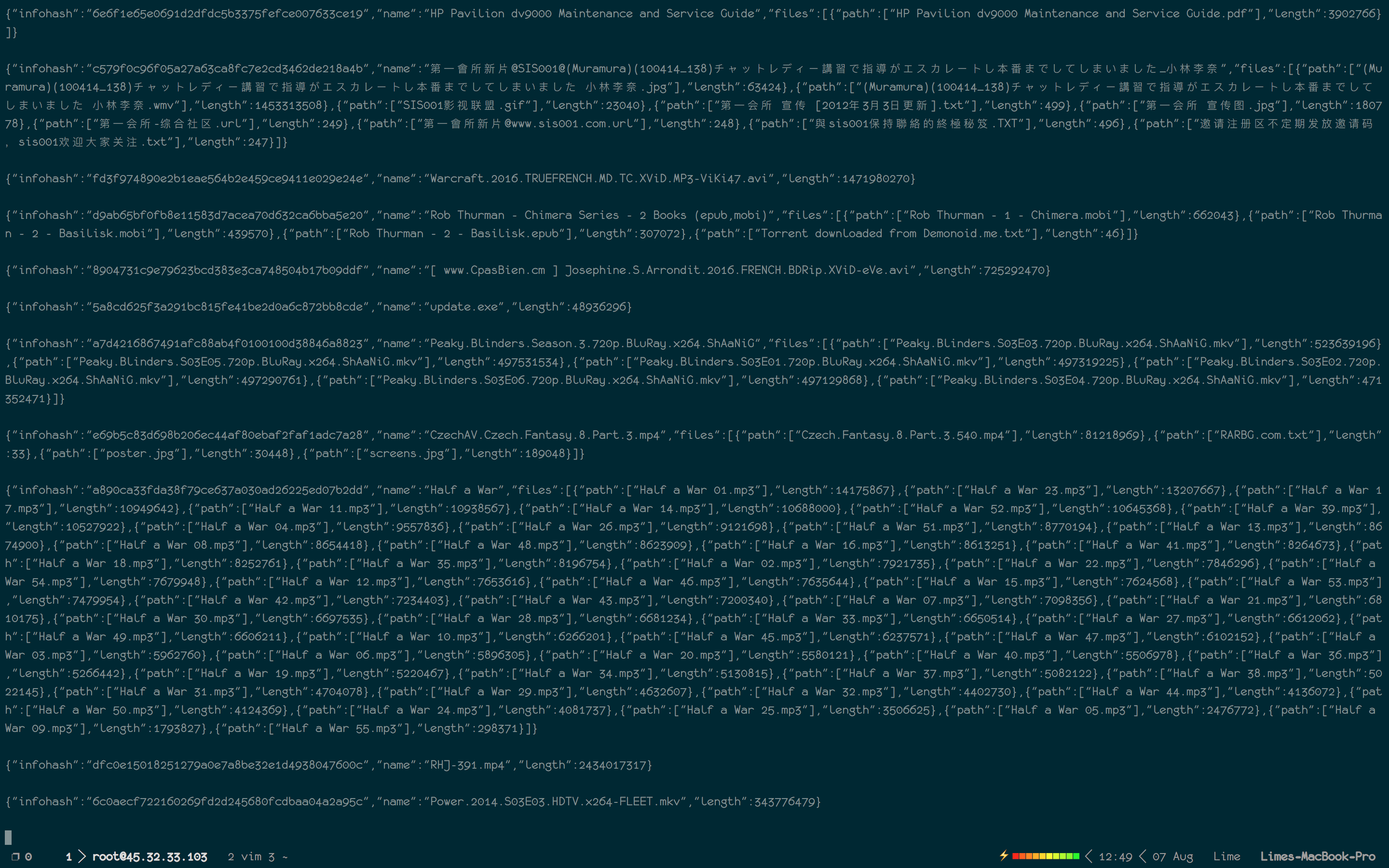See the video on the Youtube.
DHT implements the bittorrent DHT protocol in Go. Now it includes:
It contains two modes, the standard mode and the crawling mode. The standard mode follows the BEPs, and you can use it as a standard dht server. The crawling mode aims to crawl as more metadata info as possiple. It doesn't follow the standard BEPs protocol. With the crawling mode, you can build another BTDigg.
bthub.io is a BT search engine based on the crawling mode.
go get github.com/shiyanhui/dht
Below is a simple spider. You can move here to see more samples.
import (
"fmt"
"github.com/shiyanhui/dht"
)
func main() {
downloader := dht.NewWire(65535)
go func() {
// once we got the request result
for resp := range downloader.Response() {
fmt.Println(resp.InfoHash, resp.MetadataInfo)
}
}()
go downloader.Run()
config := dht.NewCrawlConfig()
config.OnAnnouncePeer = func(infoHash, ip string, port int) {
// request to download the metadata info
downloader.Request([]byte(infoHash), ip, port)
}
d := dht.New(config)
d.Run()
}You can download the demo compiled binary file here.
- The default crawl mode configure costs about 300M RAM. Set MaxNodes and BlackListMaxSize to fit yourself.
- Now it cant't run in LAN because of NAT.
- NAT Traversal.
- Implements the full BEP-3.
- Optimization.
Well, maybe there are several reasons.
- DHT aims to implements the standard BitTorrent DHT protocol, not born for crawling the DHT network.
- NAT Traversal issue. You run the crawler in a local network.
- It will block ip which looks like bad and a good ip may be mis-judged.
MIT, read more here
